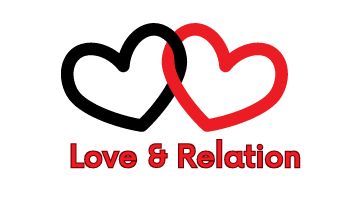Constituent Relationship Management (CRM) involves managing and analyzing interactions with constituents. It aims to improve relationships and increase engagement.
CRM systems are vital tools for organizations, helping them streamline interactions with their audience. These systems store vital data, enabling personalized communication and tailored experiences. Effective CRM strategies can boost engagement, loyalty, and overall satisfaction. Organizations can track interactions, monitor feedback, and efficiently address concerns.
CRM tools also provide insightful analytics, guiding decision-making processes. Implementing a robust CRM system can transform how organizations connect with their constituents. A well-executed CRM strategy ensures meaningful and long-lasting relationships. By leveraging CRM, organizations can enhance operational efficiency and achieve their objectives.

The Heart Of Constituent Relationship Management
Constituent Relationship Management (CRM) is a critical aspect of any organization. It involves managing and nurturing relationships with constituents. At its core, CRM is about understanding and meeting the needs of your constituents.
Key Concepts
The heart of CRM consists of several key concepts:
- Data Collection: Gathering information about your constituents.
- Data Management: Organizing and storing the collected data.
- Communication: Engaging with your constituents through various channels.
- Personalization: Tailoring interactions based on constituent data.
- Analysis: Using data to understand constituent behaviour and needs.
Why It Matters
CRM is crucial for several reasons:
- Improved Relationships: Better understand and meet constituent needs.
- Increased Engagement: More personalized communication fosters stronger connections.
- Data-Driven Decisions: Use data insights to make informed decisions.
- Efficiency: Streamline processes and reduce manual work.
- Growth: Happy constituents are more likely to support your organization.
Consider the following table for a quick overview of CRM benefits:
| Benefit | Description |
|---|---|
| Improved Relationships | Understand and meet constituent needs better. |
| Increased Engagement | Personalized communication fosters stronger connections. |
| Data-Driven Decisions | Make informed decisions using data insights. |
| Efficiency | Streamline processes and reduce manual work. |
| Growth | Happy constituents support your organization more. |
Understanding the heart of CRM helps you build stronger relationships and grow your organization. Prioritize these key concepts and see the positive impact.
Selecting The Right Crm Tool
Choosing the right Constituent Relationship Management (CRM) tool is vital for any organization. A good CRM tool helps manage interactions and relationships with both current and potential constituents. This section will guide you through the process of selecting the best CRM tool for your needs.
Features To Look For
There are several key features that any effective CRM tool should offer. These features ensure that your organization can efficiently manage its relationships and interactions.
- Contact Management: Keep track of all constituent information in one place.
- Interaction Tracking: Monitor all communications and interactions with constituents.
- Automation: Automate routine tasks such as follow-up emails and data entry.
- Reporting and Analytics: Generate reports and analyze data for better decision-making.
- Customizability: Tailor the CRM to fit the specific needs of your organization.
- Integration: Ensure the CRM can integrate with other tools and platforms you use.
Comparing Top Platforms
Below is a comparison of some of the top CRM platforms available. This table highlights the main features of each platform, helping you make an informed decision.
| CRM Platform | Contact Management | Interaction Tracking | Automation | Reporting and Analytics | Customizability | Integration |
|---|---|---|---|---|---|---|
| Platform A | Yes | Yes | Yes | Yes | High | Wide |
| Platform B | Yes | Yes | Yes | Yes | Medium | Moderate |
| Platform C | Yes | Yes | Yes | Yes | Low | Limited |
Selecting the right CRM tool depends on your specific needs. Carefully consider the features and compare the top platforms to find the best fit for your organization.
Data Management Strategies
Effective data management strategies are vital for successful Constituent Relationship Management (CRM). These strategies ensure that data is collected, analyzed, and utilized efficiently. This leads to improved insights and better decision-making.
Collecting Quality Data
Collecting quality data is the first step in any CRM strategy. Accurate data helps in making informed decisions.
- Use reliable data sources to gather information.
- Ensure data is up-to-date and relevant.
- Implement data validation techniques to avoid errors.
| Data Source | Validation Method |
|---|---|
| Customer Surveys | Double-check responses |
| Website Analytics | Use trusted tools |
| Social Media | Cross-reference data |
Data Analysis For Better Insights
We discuss the process of analysis Insights. These insights guide strategic decisions.
- Segment data into meaningful categories.
- Use analytical tools to identify patterns.
- Create visual reports for easier understanding.
Analyzing data helps in understanding customer behavior. It also identifies key trends and areas for improvement.
Visual reports such as charts and graphs make data easier to digest. These reports help stakeholders understand complex information quickly.
Read more Similar Article : The Ideal Relationship

Personalizing Constituent Interactions
Personalizing constituent interactions is key to effective relationship management. Constituents feel valued and understood when interactions are tailored to their needs. This leads to stronger relationships and better engagement. Here are some strategies to personalize interactions:
Segmentation Techniques
Segmentation divides your audience into smaller groups based on shared characteristics. This helps in targeting specific messages to each group. Here are some common segmentation techniques:
- Demographic Segmentation: Segment based on age, gender, income, education.
- Geographic Segmentation: Segment based on location, such as city, region, country.
- Behavioural Segmentation: Segment based on past interactions, purchase history, or engagement level.
- Psychographic Segmentation: Segment based on lifestyle, values, interests, or opinions.
Creating Tailored Communications
Once you have segmented your audience, create tailored communications for each group. This makes your messages more relevant and engaging. Here are some tips to create tailored communications:
- Personalize Email Campaigns: Use the constituent’s name and tailor the content to their interests.
- Customized Content: Provide content that addresses the specific needs of each segment.
- Targeted Social Media Posts: Share posts that resonate with different segments on appropriate platforms.
- Automated Messaging: Use automation tools to send personalized messages based on constituent behaviour.
By using segmentation techniques and creating tailored communications, you can ensure that each constituent feels valued and understood. This enhances their overall experience and strengthens their relationship with your organization.
Maximizing Engagement Through Events
Engaging with constituents through events can significantly enhance relationships. Well-planned events can foster deeper connections and build trust. This section explores how to maximize engagement through events.
Event Planning Essentials
Effective event planning is crucial. Start by identifying your goals. What do you want to achieve? Knowing your objectives will guide the entire planning process.
Create a detailed plan. Include timelines, budgets, and key milestones. A well-structured plan helps keep everything on track.
Consider the needs of your audience. What are their interests and preferences? Tailor your event to match their expectations. This makes them feel valued and engaged.
Key Elements of Event Planning:
- Clear objectives
- Detailed plan
- Audience preferences
- Budget management
- Timeline adherence
Leveraging Technology
Technology can significantly enhance event engagement. Use event management software to streamline the planning process. These tools offer features like registration management, attendee tracking, and feedback collection.
Incorporate social media. Create event pages and promote them across platforms. This helps reach a broader audience and keeps them informed.
Utilize live streaming. Not everyone can attend in person. Live streaming allows remote participation. It also extends your event’s reach.
Benefits of Leveraging Technology:
| Technology | Benefit |
|---|---|
| Event Management Software | Streamlined planning and tracking |
| Social Media | Broader audience engagement |
| Live Streaming | Extended reach and remote participation |
By focusing on planning essentials and leveraging technology, you can maximize engagement through events. This fosters stronger relationships with your constituents.
Feedback Loops And Continuous Improvement
Feedback loops and continuous improvement are vital in Constituent Relationship Management (CRM). They help organizations stay connected with their audience. Listening to constituents and acting on their feedback builds trust and enhances relationships.
Gathering Constituent Feedback
Gathering feedback is the first step in the feedback loop. There are many ways to collect constituent feedback. You can use surveys, suggestion boxes, and direct conversations. Each method has its strengths and weaknesses.
Surveys are effective for collecting data from a large audience. They can be distributed online or through email. Use simple questions to get clear answers. Questions should be easy to understand and answer.
Suggestion boxes can be placed at events or within your community. They allow constituents to share their thoughts anonymously. This can lead to more honest feedback.
Direct conversations offer a personal touch. They can be face-to-face or over the phone. These interactions can provide deep insights into constituent needs.
Implementing Changes Effectively
Once feedback is collected, the next step is to act on it. This is where continuous improvement begins. Create a plan to address the feedback. This plan should be clear and actionable.
Use a table to organize your plan:
| Feedback | Action | Deadline |
|---|---|---|
| Need for more community events | Plan monthly events | Next 3 months |
| Improve website navigation | Redesign website menu | Next 2 months |
Communicate changes to your constituents. Let them know their feedback was heard. This strengthens the relationship and builds trust. Use newsletters, social media, or your website to share updates.
Finally, measure the impact of the changes. Use metrics like event attendance or website traffic. This will show if the changes are successful.
Integration With Marketing And Fundraising Efforts
Constituent Relationship Management (CRM) is essential for non-profit organizations. Integrating CRM with marketing and fundraising efforts enhances the effectiveness of campaigns. This synergy maximizes donor engagement and boosts overall organizational impact.
Coordinating Efforts For Maximum Impact
Effective coordination between marketing and fundraising teams is vital. Use a CRM system to streamline communication and align objectives.
A CRM system provides a centralized database. Both teams access real-time data, ensuring consistency.
Implementing automated workflows helps in tracking donor interactions. This automation saves time and reduces errors.
Personalized marketing campaigns are more effective. Use CRM data to segment donors based on their interests and history.
Utilize analytics tools within the CRM. These tools help in measuring the success of campaigns and adjusting strategies accordingly.
Case Studies
Below are some examples of organizations that successfully integrated CRM with their marketing and fundraising efforts:
| Organization | Strategy | Outcome |
|---|---|---|
| Hope for Kids | Integrated email marketing with CRM | Increased donor retention by 20% |
| Green Earth | Used CRM for social media campaigns | Boosted online donations by 35% |
| Food for All | Automated donor follow-ups | Raised funds 15% faster |
Hope for Kids integrated email marketing with their CRM. This strategy increased donor retention by 20%.
Green Earth used CRM for social media campaigns. They boosted online donations by 35%.
Food for All automated donor follow-ups. This automation helped them raise funds 15% faster.

Evaluating Success And Roi
Constituent Relationship Management (CRM) systems are invaluable tools for organizations. Evaluating their success and Return on Investment (ROI) is crucial. Understanding how to measure effectiveness can guide future strategies. This section delves into the key metrics and strategies for growth.
Metrics And Kpis
To evaluate CRM success, organizations should focus on specific Metrics and Key Performance Indicators (KPIs). These metrics provide a clear picture of CRM effectiveness.
- Adoption Rate: This measures how many team members use the CRM. High adoption indicates good user engagement.
- Customer Retention Rate: This shows how well the CRM helps keep customers. A high rate means the CRM is effective.
- Lead Conversion Rate: This tracks how many leads turn into actual customers. A higher rate means better CRM performance.
- Sales Growth: This metric measures the increase in sales over time. It indicates how well the CRM supports sales activities.
| Metric | Importance |
|---|---|
| Adoption Rate | Indicates user engagement with the CRM |
| Customer Retention Rate | Shows CRM effectiveness in keeping customers |
| Lead Conversion Rate | Measures CRM performance in converting leads |
| Sales Growth | Indicates CRM support in increasing sales |
Adapting Strategies For Growth
Once you have the right metrics, adapt your strategies for growth. This involves analyzing data and making informed decisions.
- Identify Weak Points: Use metrics to find areas needing improvement. Focus on low-performing aspects.
- Enhance Training: Ensure that your team knows how to use the CRM effectively. Provide ongoing training and support.
- Customize Features: Tailor the CRM to fit your organization’s specific needs. Custom features can boost productivity.
- Monitor Progress: Regularly check metrics to track improvements. Make adjustments as needed for continuous growth.
Adapting strategies based on data ensures that the CRM evolves with your organization’s needs. By focusing on the right metrics and making informed decisions, organizations can maximize their CRM’s ROI.
Frequently Asked Questions
What Is A Constituent Relationship?
A constituent relationship refers to the connection between individuals and their representatives in government. It involves communication, support, and advocacy, ensuring constituents’ needs and opinions are addressed.
What Is A Constituent In Management?
A constituent in management refers to any individual or group that has an interest or stake in the organization’s activities. Examples include employees, customers, shareholders, and suppliers.
What Are Constituencies In Crm?
Constituencies in CRM refer to different groups such as customers, employees, and partners. Each group interacts with the CRM system. Understanding these constituencies helps businesses tailor their strategies effectively.
What Is The Meaning Of Relationship Management?
Relationship management involves building and maintaining healthy connections with customers, clients, and stakeholders to enhance satisfaction and loyalty.
Conclusion
Effective Constituent Relationship Management boosts engagement and strengthens connections. Adopt CRM tools to enhance communication and streamline operations. Implementing a CRM strategy ensures better data management and improved relationships. Stay ahead by leveraging CRM for sustainable growth and success. Embrace CRM to foster loyalty and drive organizational efficiency.


Leave a Reply